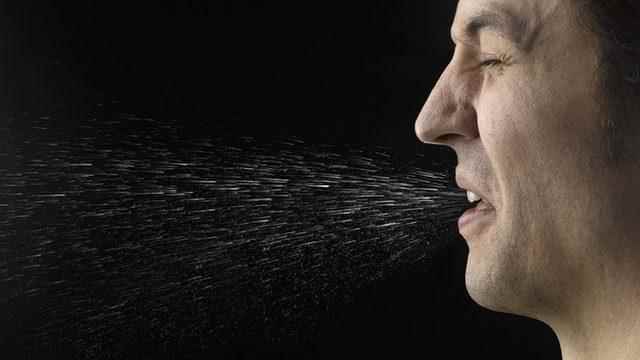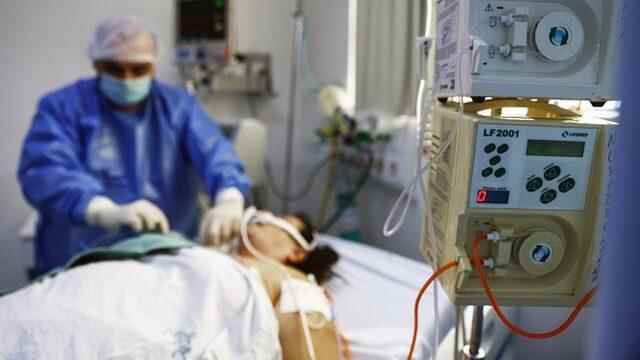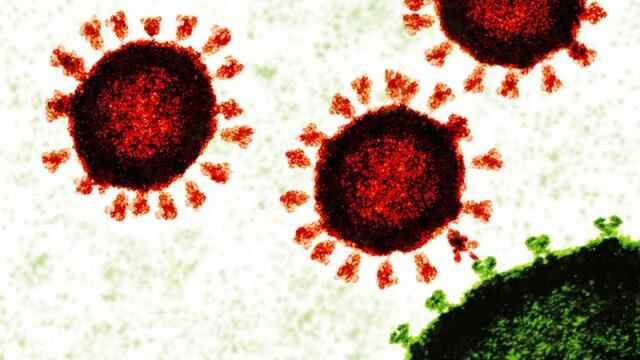Two and a half years after the coronavirus pandemic began, Covid infections have started to rise again in various parts of the world.
Two new rapidly spreading sub-variants of Omicron (BA.4 and BA.5) and the relaxation of measures are contributing to the increase in the number of cases.
However, new questions have been raised about the transmission of the coronavirus and its effects on our bodies.
Let’s take a look at what Covid does to your body and what happens every day after first contact with the pathogen, the disease-causing agent.
It should be noted that the following timeline is average data based on information published in scientific studies reviewed by international health organizations and may change in certain circumstances.
Day 0: Infection
Infection begins after close contact with someone infected with the coronavirus.
When a person speaks, sings, coughs or sneezes, droplets of saliva carrying Covid particles are released. The amount of virus varies according to the situation.
“Some people distribute the amount less, about 10,000 viral copies per milliliter of saliva,” says Virologist José Eduardo Levi, a researcher at the Institute of Tropical Medicine at the University of Sao Paulo. “But the average load ranges from 10,000 to one million particles. and we’ve seen some people carry up to a billion viral copies per milliliter”.
These tiny infected droplets can either come in direct contact with our faces or stay suspended in the air for minutes or even hours.
This is reminiscent of cigarette smoke hanging in a room. Depending on the air circulation, people can inhale these droplets as they breathe.
This is when the infection process really begins. SARS COV-2; It uses the spike protein that coats the outer surface of the Covid virus to bind to cell receptors in the mucous membranes of the nose, mouth, and eyes.
From this moment on, the virus invades the cell and uses the cell’s biological machinery to repeatedly create new copies of itself.
“This replication process produces 100 to 1000 new viruses in a single cell. The number is so high that the cell cannot cope with it. After the cell explodes and dies, these viruses are released and repeat the same process in neighboring cells,” explains Levi.
This duplication is effective in increasing the number of new variants. Not all copies are the same, and some can have significant genetic mutations. This change in the genome opens the door to new species, such as the currently known alpha, beta, gamma, delta, and omicron variants.
1st, 2nd and 3rd day: Incubation
After Sars-CoV-2 succeeds in invading our body’s first cells, the next step is to expand its scope.
As each infested cell releases thousands of copies, the virus advances further in the organism. This silent evolutionary period, in which the presence of the virus cannot be detected, is known as incubation.
“We noticed that the incubation time of the new variants was reduced,” says Virologist Anderson F. Brito, a scientific researcher at the Todos pela Saude Institute in Brazil.
The incubation period of the Alpha variant was on average five to six days, according to the UK Health Safety Authority report. In the Delta it was down to four days.
The median time between viral spread with Omicron and onset of symptoms was three days.
In other words, while it normally takes almost a week for Covid symptoms to appear, they can now appear overnight. However, the incubation period may vary. In some cases, symptoms appear 14 days after first contact with the virus.
Days 4 and 14: Onset and development of symptoms
As the virus travels through the upper respiratory tract, namely the nose, mouth, and throat, it encounters my immune system, which eventually launches an attack against it.
The first line of defense includes neutrophils, monocytes, and cells called “natural killers”, as detailed in a 2021 paper by two researchers at Zhejiang University Hospital in China.
Over time, other immune units come into play, such as T lymphocytes, which respond in a more organized fashion to viral invasion, and B lymphocytes, which release antibodies.
Covid symptoms occur in some people precisely as a result of this immune reaction. Runny nose, cough, fever and sore throat are the effects of simultaneous attempts to expel the virus from the body and the incessant work of so many cells.
But how long do these symptoms last?
Infectious disease specialist from the University of Sao Paulo, Virologist Prof. “It depends on the person. There are people who have few symptoms and get better after four or five days. For others, it takes longer,” says Nancy Bellei.
“Overall, the worst symptoms, such as sore throat and fever, last about three days,” says Bellei, who is also a member of the Brazilian Society of Infectious Diseases (SBI). It may take days”.
At this stage, it is very important to stay at home and reduce contact with others as much as possible. If you need to go out or interact with others, a good mask can prevent you from spreading the virus.

Rest is very important for the body to heal. Pain relievers and fever reducers can also help.
“If you have shortness of breath or your fever persists within 72 hours of the onset of symptoms, it is recommended that you seek medical attention,” says Bellei.
This is especially important for the elderly, those with chronic diseases or those with weakened immune systems.
Day 15 and beyond: End (or onset of prolonged Covid symptoms)
About two weeks after first contact with the coronavirus, the immune system usually “wins the battle.”
Vaccines help with this because they allow the body’s defenses to be “trained” to fight the pathogen even before it comes into contact with it.
In some cases, the virus manages to reach vital organs such as the lungs, causing serious inflammatory conditions. These conditions often require immediate attention and increase the risk of death.

However, there is a long-term risk of Covid, where symptoms persist for months or even years, even for patients who recover.
While this is still unclear, the U.S. Centers for Disease Control and Prevention (CDC) estimates that 13.3 percent of people with coronavirus have symptoms that persist for a month or more.
Also, according to the CDC, more than 30 percent of Covid patients who need to go to the hospital still experience a range of ailments six months later, from fatigue and breathing problems to anxiety and joint pain.
